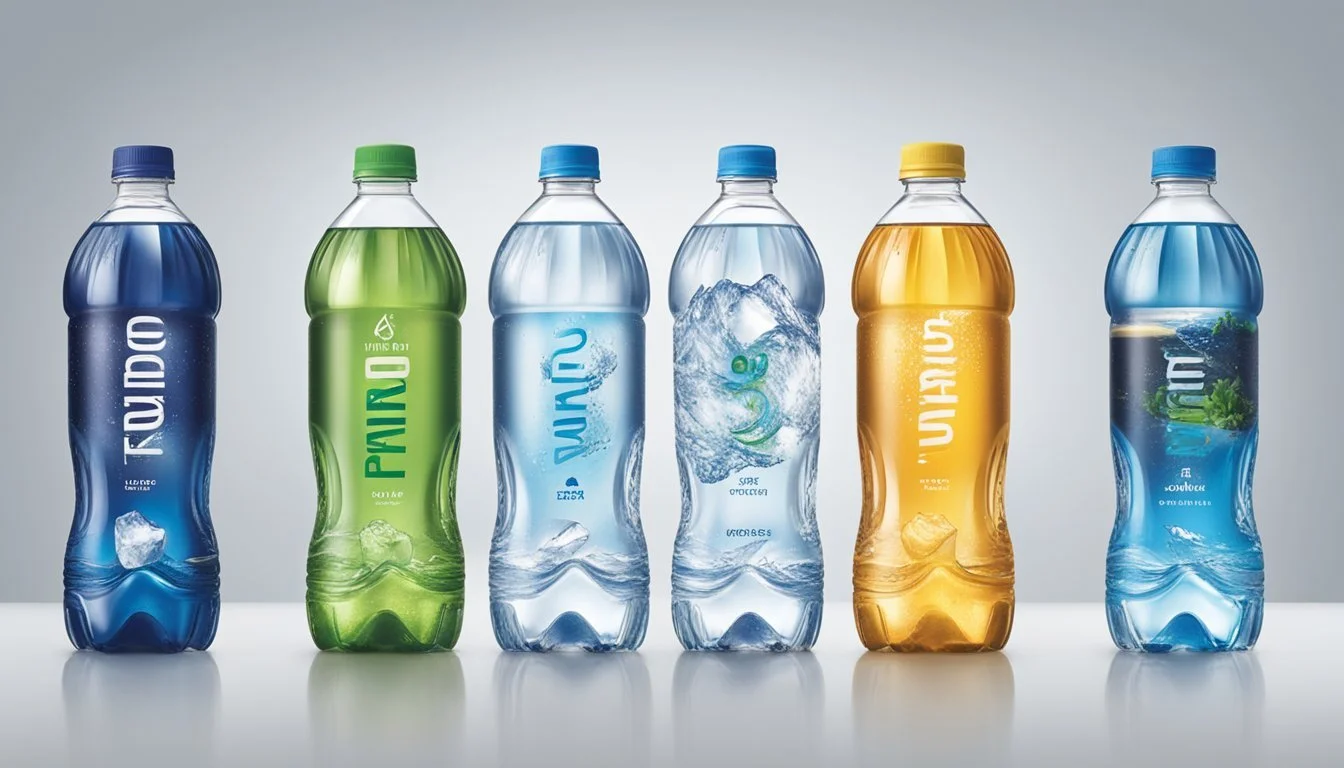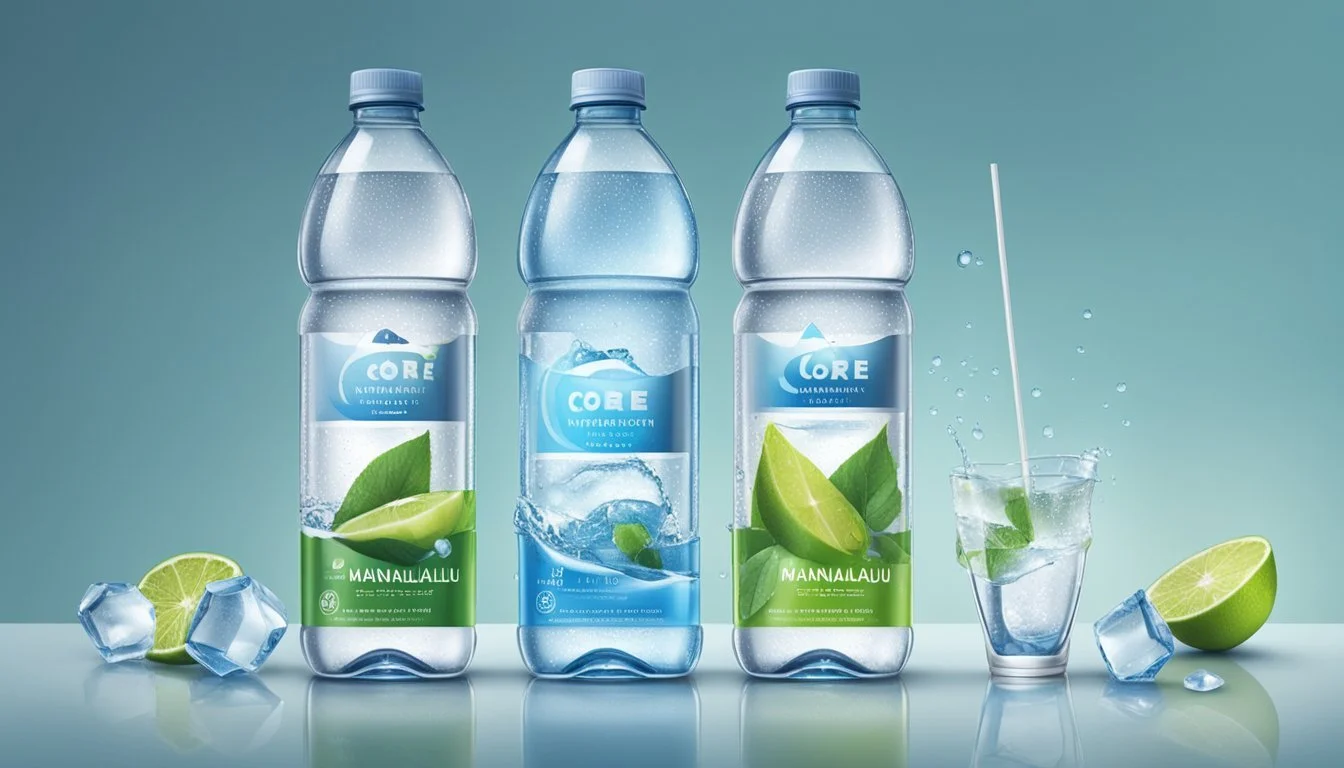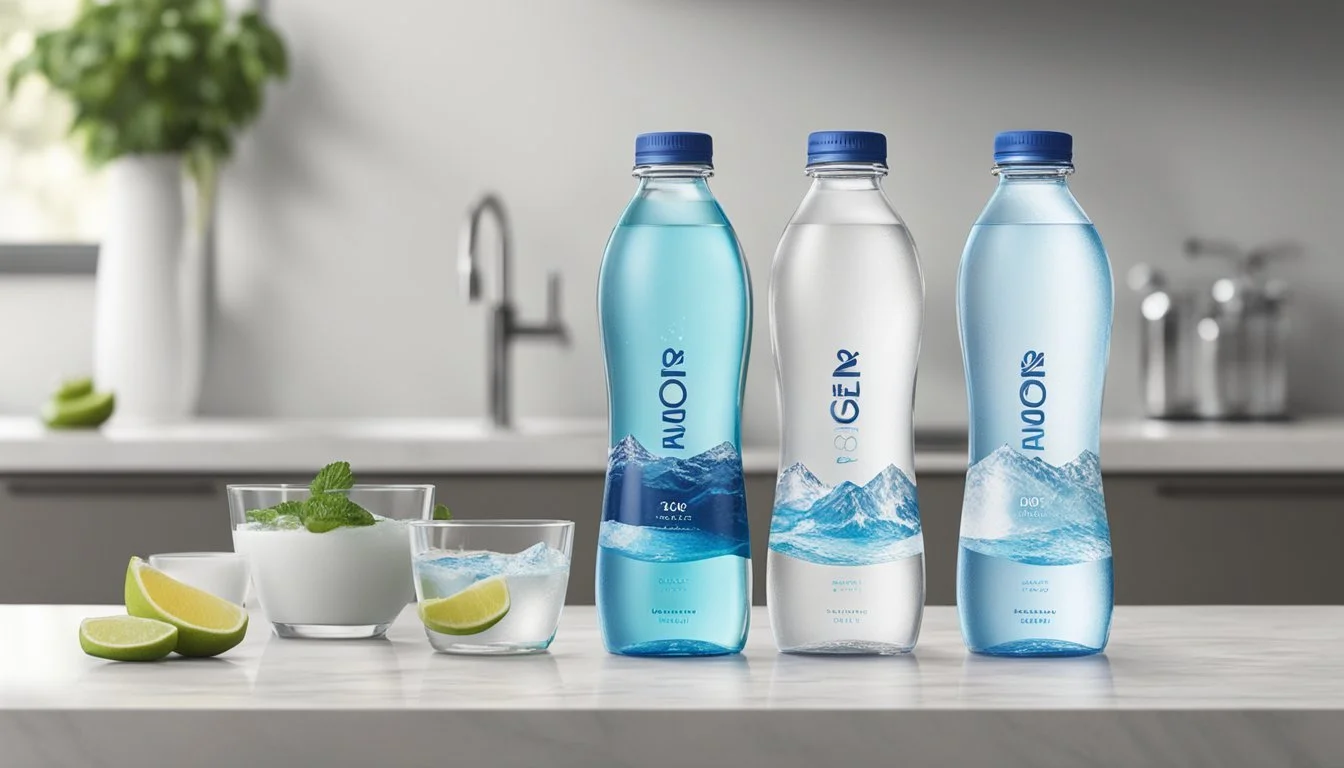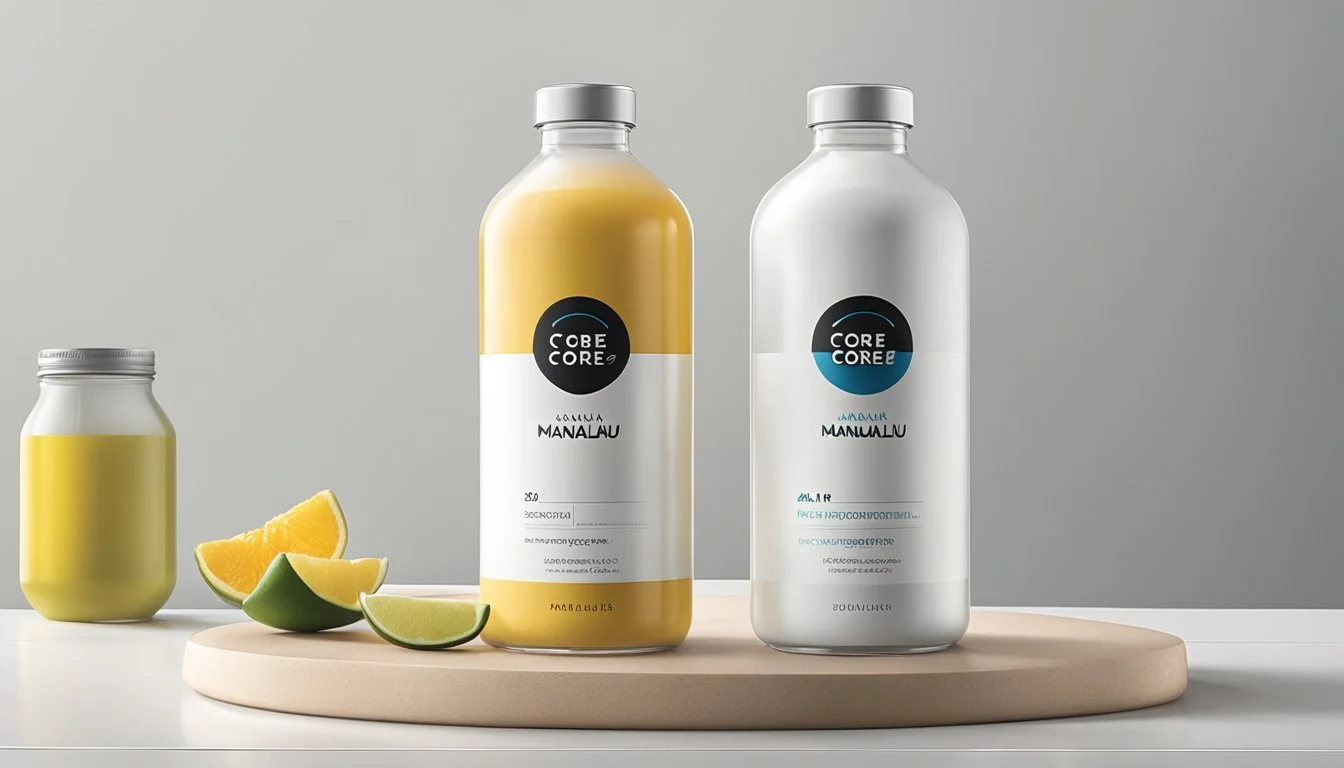Core Hydration vs. Mananalu
A Clear Comparison of Bottled Water Brands
When choosing the best bottled water, health-conscious consumers often debate between Core Hydration and Mananalu. Core Hydration markets itself as a premium brand, boasting ultra-purified water with a pH that matches the human body's natural state. Meanwhile, Mananalu, launched by actor Jason Momoa, focuses on environmental sustainability by offering purified water in 100 percent recyclable aluminum cans.
For those prioritizing purity and hydration, Core Hydration may be the better choice due to its electrolytes and minerals designed for balanced taste. It typically provides a refreshing experience that fitness enthusiasts and everyday consumers appreciate. The brand also appeals to those mindful of their body’s pH balance.
Mananalu, on the other hand, offers an appealing alternative for eco-conscious consumers. Its mission-driven approach aims to reduce single-use plastic, aligning well with global sustainability efforts. This bottled water brand merges health benefits with a commitment to the environment, making it a strong contender in the market.
The Basics of Bottled Water
To make informed choices about bottled water, it's important to understand factors like pH levels, mineral content, and ingredients. This section will explain these essentials, focusing on pH levels and the breakdown of minerals and ingredients.
Understanding pH Levels and Their Significance
The pH level of water is a measure of its acidity or alkalinity. A pH of 7 is neutral, with values below 7 being acidic and above 7 being alkaline.
Core Hydration prides itself on a balanced pH of 7.4, aligning with the body's natural levels. This can be particularly beneficial for those looking to maintain an optimal acid-base balance in their body.
Mananalu does not specifically market its water based on pH levels. However, it is still crucial to know that pH can affect the taste and potential health benefits of the water. Alkaline water enthusiasts argue that a higher pH can neutralize acid in the bloodstream and aid in detoxification.
Minerals and Ingredients Breakdown
The mineral content of bottled water can vary widely between brands, impacting both health benefits and taste. Core Hydration includes minerals like potassium bicarbonate, magnesium chloride, and calcium chloride. These ingredients provide electrolytes, which are essential for maintaining hydration and electrolyte balance in the body.
In contrast, Mananalu focuses strongly on its environmental mission rather than specific mineral content or electrolytes. It stands out by packaging its water in 100% recyclable aluminum cans, aiming to reduce plastic waste significantly.
Some bottled water brands list the exact mineral content, while others, like Core Hydration, may not disclose precise amounts. This can be important for consumers who need to track their mineral intake for health reasons. Always check labels for a thorough ingredient list and mineral breakdown.
Health and Hydration
When it comes to hydration, both Core Hydration and Mananalu promise health benefits, but they differ in their approach to ensuring optimal hydration and electrolyte balance.
Hydration and Its Impact on the Body
Hydration is essential for maintaining bodily functions, such as regulating body temperature, joint lubrication, and transporting nutrients. Proper hydration supports physical performance and cognitive function. Core Hydration aims to provide water with a perfect pH balance of 7.4, which matches the body's natural pH and supports an alkaline environment. Mananalu, focusing on environmental sustainability, offers purified water in recyclable aluminum cans and positions itself as a solution for reducing plastic waste.
Maintaining a balanced pH is crucial. Alkaline water, like Core Hydration, can neutralize acid in the bloodstream. This may help reduce acid reflux and improve overall health. Mananalu's purified water, while not specifically marketed as alkaline, meets hydration needs effectively by ensuring cleanliness and purity.
Comparing Electrolyte Levels
Electrolytes like potassium, magnesium, and calcium are vital for maintaining fluid balance, muscle function, and nerve signals.
Core Hydration includes potassium bicarbonate, magnesium chloride, and calcium chloride in its ingredient list. Their precise quantities are not disclosed, but these minerals are essential for electrolyte balance. This balance can help prevent dehydration and related issues like cramps or fatigue.
Mananalu aims for pure hydration without adding electrolytes or minerals. Its primary focus is on purity and environmental sustainability rather than enhancing electrolyte content. For those who prefer their hydration without additional electrolytes, Mananalu is a suitable option.
By understanding the hydration needs and electrolyte content of each brand, consumers can make informed decisions aligning with their health goals.
Bottled Water Brand Profiles
Core Hydration offers a multi-stage purification process aimed at providing ultra-purified water with balanced pH levels. Mananalu, launched by Jason Momoa, focuses on environmental sustainability by offering water in 100% recyclable aluminum cans.
Core Hydration: Brand Overview and Products
Core Hydration promotes itself through a seven-stage purification process that includes reverse osmosis. Their water is balanced with a pH of 7.4 to match the body's natural levels. Core Hydration also adds electrolytes and minerals for enhanced flavor and hydration.
They market their product as ideal for those looking for a premium hydration option. Core Hydration is often compared with brands like Smartwater and Essentia due to its focus on purity and balanced pH.
Key features:
Seven-stage purification process
Balanced pH of 7.4
Added electrolytes and minerals
Premium hydration focus
Production and Purification Techniques
Core Hydration and Mananalu utilize advanced processes to ensure the purity and quality of their bottled water, focusing on techniques such as reverse osmosis and unique filtration methods.
Reverse Osmosis and Its Role in Purification
Core Hydration employs a seven-stage purification process, prominently featuring reverse osmosis. This technique forces water through a semi-permeable membrane, which effectively removes impurities and contaminants. By eliminating particles as small as 0.0001 microns, reverse osmosis ensures the water's purity.
Mananalu, on the other hand, doesn't explicitly highlight reverse osmosis in its purification stages. Instead, it focuses on providing purified water in 100 percent recyclable aluminum cans. The emphasis here is less on reverse osmosis and more on the broader environmental impact by reducing single-use plastics.
Insights into Purification Processes
For Core Hydration, after the initial reverse osmosis, water undergoes additional processes, including carbon filtration and UV light treatment. These steps ensure the removal of chlorine and other potential contaminants, while also adding a blend of minerals and electrolytes. The result is ultra-purified water, free from sodium and chlorine.
Mananalu prioritizes environmental sustainability in their approach. The purification methods, though not as detailed, aim to deliver high-quality, purified water. This approach focuses on maintaining water purity while packaging it in recyclable aluminum, aligning with their mission to eliminate single-use plastic bottles.
Both brands differ significantly in their purification priorities. Core Hydration emphasizes extensive purification processes, marked by reverse osmosis and mineral enhancement. In contrast, Mananalu places equal importance on water purity and environmental sustainability, providing a distinct yet effective bottled water solution.
Taste and Water Sources
Core Hydration states that its water has a perfectly balanced pH, aligning with the body's natural pH level. This balance often contributes to a smooth and almost neutral taste, making it easy for most people to drink.
Mananalu focuses on an environmental mission and provides purified water in recyclable aluminum cans. The taste is clean, often reflecting the purity achieved through their filtration process.
Water Source:
Core Hydration: This water is sourced and treated to adjust its pH and electrolyte content. It does not come from a single natural spring or aquifer but is engineered to meet specific criteria for hydration.
Mananalu: It uses purified tap water, which is then purified further for quality and taste. The aim is to provide an eco-friendly alternative to traditional bottled water.
Taste Comparison:
Core Hydration: Slightly alkaline, providing a taste that many find neutral and refreshing.
Mananalu: Purified and fresh, ensuring a crisp and clean drinking experience.
Both products cater to different consumer preferences, with Core focusing on pH balance and Mananalu prioritizing environmental sustainability.
Packaging and Environmental Impact
Core Hydration and Mananalu take different approaches in their effort to address environmental concerns related to packaging and sustainability.
The Role of Packaging in Brand Image
Core Hydration uses plastic bottles labeled as 100% recyclable and BPA-free. This ensures consumer safety regarding chemical leaching and complies with FDA regulations. Despite being recyclable, plastic bottles often contribute to plastic waste, as not all consumers recycle them properly.
Mananalu, founded by Jason Momoa, uses 100% aluminum cans, aligning with its mission to eliminate single-use plastics. Aluminum is highly recyclable and reduces the risk of chemical interaction since the cans are unlined, though this poses some risk of acid interaction. By opting for aluminum packaging, Mananalu sets a strong environmental image aimed at reducing plastic bags and other plastic waste.
Aspect Core Hydration Mananalu Material BPA-free Plastic Bottles 100% Aluminum Cans Recyclability 100% Recyclable, but depends on users 100% Highly Recyclable Safety FDA-Compliant, Chemical-safe Unlined, Risk of Acid Interaction Environmental Impact Potential Plastic Waste Reduced Plastic Usage
Each brand's packaging choices impact their environmental footprint and reflect their commitment to sustainable practices. This distinction is crucial for consumers mindful of their environmental impact.
Marketing and Consumer Perceptions
The marketing strategies and consumer perceptions of Core Hydration and Mananalu reveal distinct approaches that shape their identities and customer loyalty.
Brand Positioning and Customer Loyalty
Core Hydration positions itself as a premium water brand. Its unique selling point includes being ultra-purified and having a pH that matches the human body's natural state. Electrolytes and minerals are added for a balanced taste. The ergonomic design of its bottle appeals to on-the-go consumers and athletes.
Mananalu, founded by actor and ocean activist Jason Momoa, markets itself with a strong environmental mission. The brand aims to eliminate single-use plastic bottles by offering purified water in 100% recyclable aluminum cans. This sustainability focus resonates particularly with eco-conscious consumers.
Customer loyalty for Core Hydration often stems from its clean taste and health-conscious image. For Mananalu, loyalty is built on ethical sourcing and the environmental impact of its packaging. Both brands use targeted marketing campaigns to bolster these perceptions, with Mananalu frequently leveraging Momoa's celebrity for added brand visibility.
Price Point and Value
Examining the price and value of Core Hydration and Mananalu bottled water brands highlights important details that influence consumer choices. This includes their cost, packaging, and the perceived benefits to make an informed decision.
Comparing the Cost of Different Water Brands
Core Hydration markets itself as a premium brand. A 30.4 fluid ounce bottle can range between $2.00 to $3.00 USD. This price reflects its ultra-purified water, balanced pH, and added electrolytes.
Mananalu Water, promoted for its environmentally-friendly aluminum can packaging, is available at several retailers including Whole Foods and Amazon. While specific pricing may vary, the eco-conscious packaging often justifies a slightly higher cost compared to standard plastic bottles.
Perceived Value and Consumer Choice
Mananalu's commitment to eliminating single-use plastics appeals to environmentally-conscious buyers. The 100% recyclable aluminum cans provide a significant value addition. Consumers who prioritize sustainability may find this brand more appealing despite a marginally higher price.
Core Hydration, on the other hand, emphasizes water quality and health benefits with its BPA-free, recyclable plastic bottles. The optimal pH and added electrolytes cater to health-focused consumers who value these features over sustainability.
In essence, the perceived value between Core Hydration and Mananalu depends on whether consumers prioritize environmental impact or specific health benefits.
Conclusion
When comparing Core Hydration and Mananalu, both offer unique propositions for the discerning consumer.
Core Hydration markets itself on ultra-purified water with a pH that matches the human body. It includes electrolytes and minerals for a balanced taste. This may appeal to those prioritizing hydration and specific health benefits.
Mananalu, launched by Jason Momoa, emphasizes its mission to eliminate single-use plastic. The water comes in 100% recyclable aluminum cans, catering to environmentally conscious consumers looking to reduce their environmental impact.
Core Hydration Mananalu Container 100% recyclable plastic 100% recyclable aluminum Electrolytes Yes No Key Selling Point pH balance, purification Environmental mission Health Focus High Moderate Environmental Focus Moderate High
Decision-making for consumers might hinge on the priorities between health benefits and environmental impact. Both brands provide reliable hydration, but with different focal points.
Core Hydration targets those interested in premium water with health-centric features, while Mananalu appeals to consumers motivated by sustainability and environmental responsibility.
Both options excel in providing hydration but offer different benefits based on personal values and priorities.










